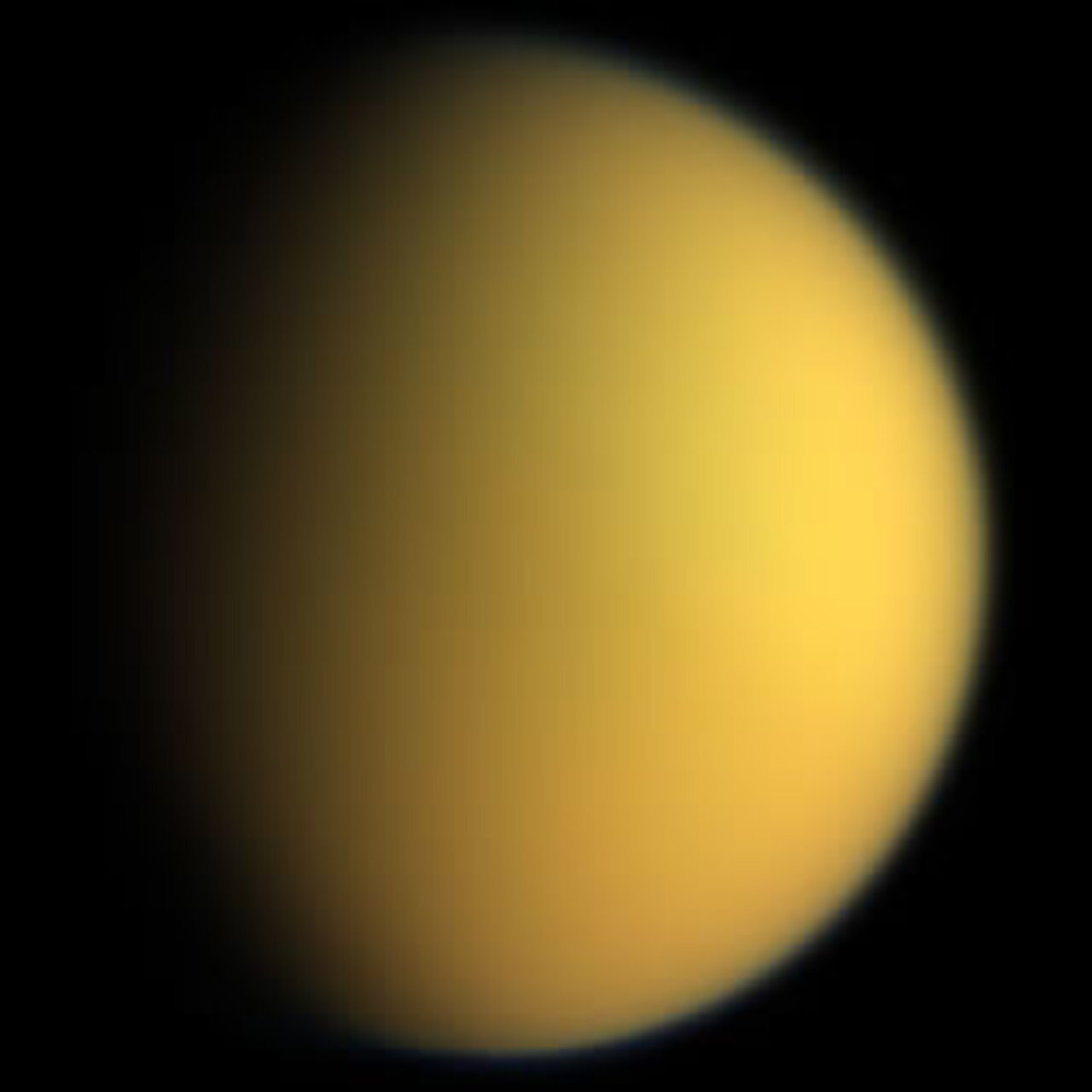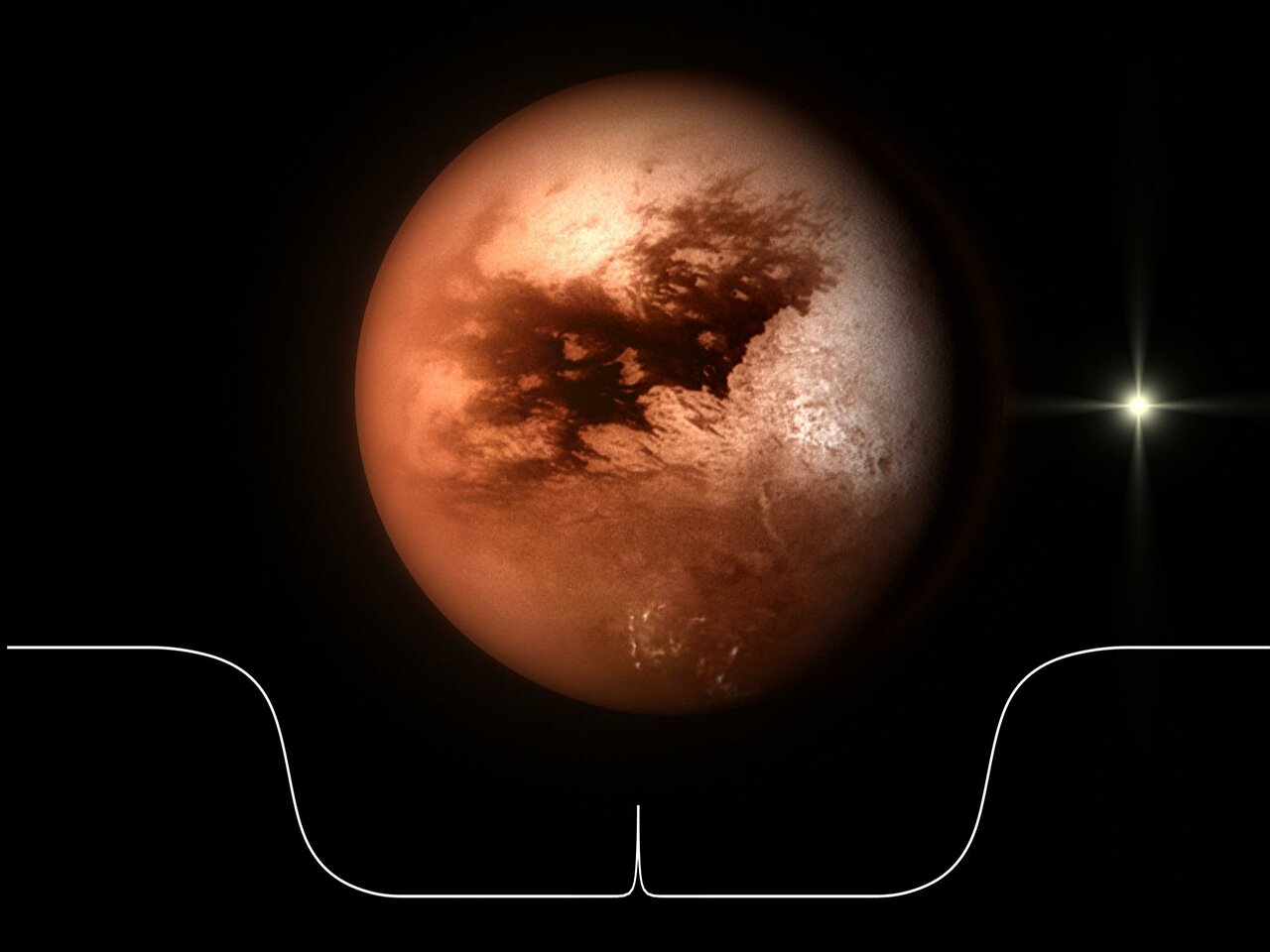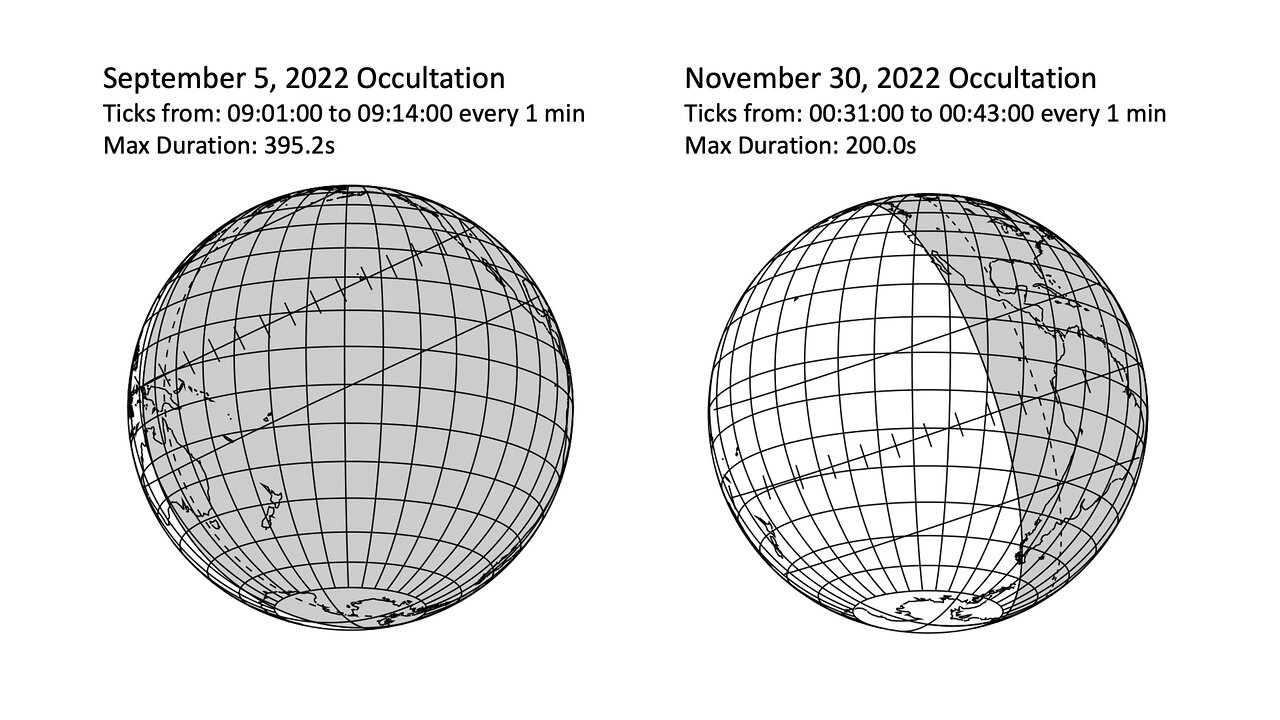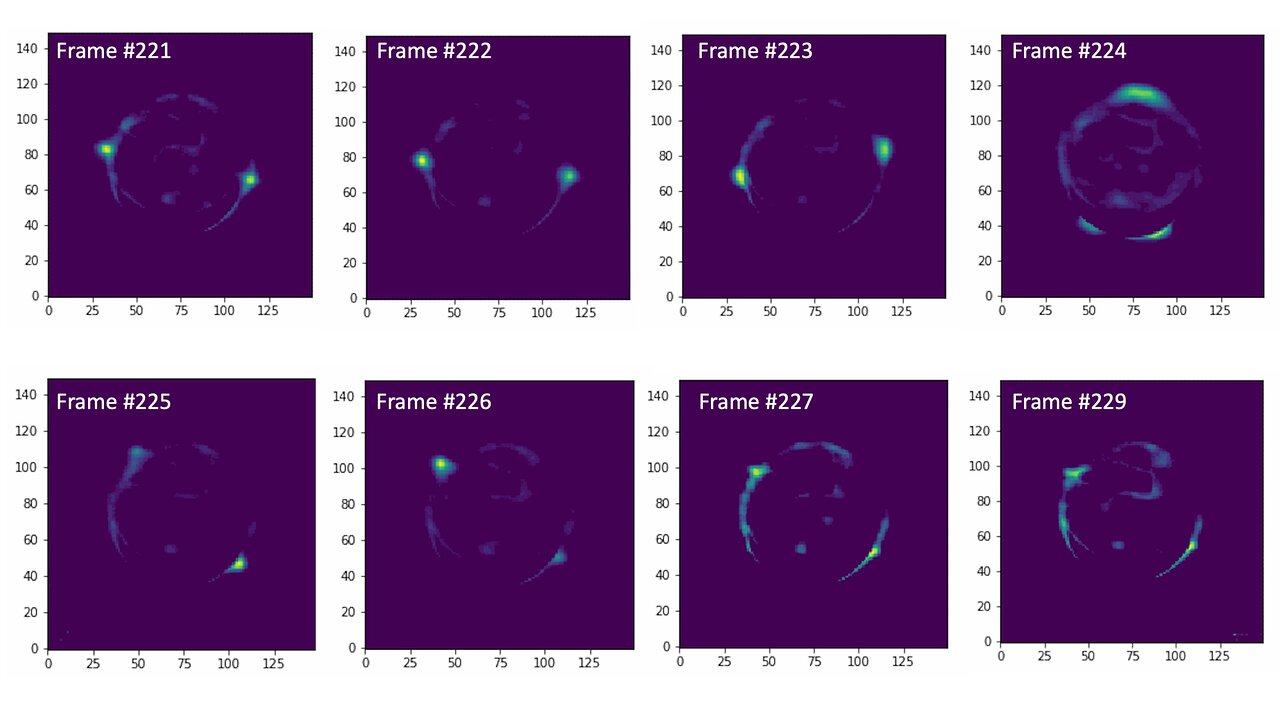
Forecast for Titan: Using Stars to Study Atmosphere on Saturn’s Moon
Two rare stellar occultation events gave astronomers a chance to uncover details about Titan’s atmospheric wind patterns.
Profile
Name:
- Gemini North
Location:
- Maunakea, Hawai‘i, USA
Optical design:
- Ritchey-Chrétien Cassegrain
Primary mirror diameter:
- 8.1 meters
Operational waveband:
- Optical/Infrared
First light:
- 1999
Altitude:
- 4214 meters
Science goals:
- Observatories work together to provide the best images and a complete, clear view of Earth’s sky
- World leader in wide-field adaptive-optics-assisted infrared imaging, supporting research in almost all areas of astronomy
- Provides the lowest possible emissivity of all telescopes for optimal infrared observing from the ground
Name:
- SOAR
Location:
- Cerro Pachón, Chile
Optical design:
- Ritchey-Chrétien Cassegrain
Primary mirror diameter:
- 4.1 meters
Operational waveband:
- Optical/Near-infrared
First light:
- 2006
Altitude:
- 2713 meters
Science goals:
- The telescope is designed to work from the atmospheric cut-off in the blue (320 nm) to the near-infrared, with excellent optical image quality.
11 April 2023
In the field of astronomy, inspiration can strike unexpectedly. Such was the case in November 2021 when a group of astronomers were having lunch and discussing a common point of interest: Saturn’s largest moon, Titan. During their discussion, Martin Cordiner, a researcher in astrochemistry and planetary science at the NASA Goddard Space Flight Center, mentioned some interesting data from a recently published paper he had worked on that involved observations of Titan’s atmospheric winds. The conclusions drawn from this study would present the group with a mystery, and disentangling this mystery would not only require the power of eight different telescopes across two countries to capture a chance alignment of Earth, Titan, and a distant star, it would also bring together an international collaborative team of astronomers.
All the mountains on Titan are named after mountains in Middle-earth, a fictional world in the Lord of the Rings trilogy created by J.R.R. Tolkien (1892–1973). Some examples include Angmar Mons, named after the Mountains of Angmar, and Moria Mons, named after the Mountains of Moria.
“Here was an opportunity to learn something new,” says Eliot Young, a principal scientist at the Southwest Research Institute's Space Studies Department. “It’s certainly a testament to the importance of meeting people face-to-face and not just having Zoom meetings.”
Titan is the only other world in our Solar System to have a thick atmosphere and stable surface liquid. But unlike Earth, Titan’s rivers, lakes, and seas are composed of hydrocarbons, including methane and ethane — compounds that exist on Earth in the form of gas. The extremely cold temperature of Titan liquifies these natural gases, which are then circulated through the atmosphere as clouds, fog, and precipitation, following stages similar to the water cycle on Earth.
This similar, yet alternative, atmospheric circulation system makes Titan an enticing object to study. “It’s pretty remarkable that we can even see the weather patterns on another planet,” says Young. Observations of Titan’s weather patterns can help build a deeper understanding of how its nearly Earth-like atmosphere formed.
Seeing Through Titan’s Haze
To study Titan’s general circulation, astronomers observe the winds at different atmospheric ‘layers’, or altitudes. This is challenging though, since Titan’s atmosphere consists of a smog-like haze formed by chemical reactions with methane molecules. So, scientists have developed different techniques for probing Titan’s haze layers.
One way to measure Titan’s winds is by observing an occultation — a chance alignment in which light from a distant star passes through Titan’s atmosphere. As the star moves behind Titan, astronomers can measure the slow dimming of light to produce what is called a ‘lightcurve’. At the center of the lightcurve, a unique feature called a ‘central flash’ appears, when Titan’s atmosphere acts like a refractive lens and bends the star’s light toward a focal point. With adaptive optics, astronomers can even image the refracted light before and after the central flash when it appears as two bright spots on Titan’s edge. Characteristics of the lightcurve and the refracted light reveal information about Titan’s atmospheric winds. An occultation observed in 1989 revealed that Titan’s winds are fastest at mid-northern and mid-southern latitudes and slowest near the equator.
Another method to probe Titan’s haze layers uses Doppler wind measurements. Depending on the speed and direction of the winds, the frequency of light emitted by different molecules within the atmosphere will be Doppler shifted, like the sound of a car horn moving farther away from the listener. By measuring how much the molecule’s light is shifted, astronomers can estimate how fast the winds are moving. Cordiner and his colleagues used this method to observe Titan in 2016 and 2017 with the Atacama Large Millimeter/submillimeter Array (ALMA) in the Atacama Desert in Chile. What these measurements showed, however, were fast winds at the equator and slow winds in the northern and southern latitudes, contradicting the results of the 1989 occultation observations.
“It’s pretty remarkable that we can even see the weather patterns on another planet.”
When Cordiner shared these results with his lunchmates, the discrepancy piqued the interest of the rest of the group. Young, who has a background in observing occultations, turned to Juan Lora, assistant professor of planetary science at Yale University, who had been working on global circulation modeling of Titan’s atmosphere, and asked what behavior his models showed. To everyone’s surprise, Lora said his models closely agreed with the occultation results but with some additional asymmetries, showing fast winds at mid-latitudes that oscillate from year-to-year between the northern and southern hemisphere. It became apparent that the current understanding of Titan’s winds had some significant holes in it, a realization that would spark a collaborative effort to reconcile the data with the models.
“This seemed like a really encouraging way to resolve a conflict between two observations that should be good and compare them to a model, so that’s what we decided to do,” says Young. “And with the ALMA group, the occultation group, and the modeling group it got to be a pretty big collaboration.”
Assembling the Team
Young knew of two upcoming occultation events that would present the perfect opportunity to take new data. But in order to secure time on the proper telescopes, the team would have to jump into action right away. Conor Nixon, an astronomer and planetary scientist at the NASA Goddard Space Flight Center and a member of the ALMA group, put out a call to colleagues to help write observing proposals, the success of which would determine the fate of the project.
“Occultations are a special and very rare thing, so to be able to observe one from Earth is an incredible opportunity.”
Observing an occultation is like observing a solar eclipse — you have to be in the right place at the right time. To accurately capture the event, astronomers must use a telescope located within Titan’s shadow on Earth. Luckily, on 5 September 2022 Titan’s shadow would be passing right over Hawai‘i where the NASA Infrared Telescope Facility (IRTF), W. M. Keck Observatory, Faulkes Telescope North, and Gemini North, one half of the International Gemini Observatory, operated by NSF’s NOIRLab, are located. And on 30 November 2022 Titan’s shadow would be passing over Chile where the Very Large Telescope (VLT), ALMA, Southern Astrophysical Research (SOAR) Telescope, and Gemini South, the other half of the International Gemini Observatory, operated by NSF’s NOIRLab, are located.
Using multiple telescopes would allow the team to observe the occultation across a range of wavelengths, each one revealing a slightly different perspective of the event. Additionally, they would be assured that in the event of instrument failure, they would have back-ups. “With such a rare event you don’t want to take any chances,” says Nixon.
With observing proposal deadlines fast approaching, it was a scramble to reserve time on all of these telescopes, so the team had to solicit help from a few more astronomers. To get time on Faulkes North, Nixon reached out to Nick Lombardo, a grad student at Yale who worked with Lora on the Titan modeling. To get time on Keck, Young reached out to a longtime colleague of his, Imke de Pater, professor at University of California, Berkeley, who has experience observing Titan with Keck as a part of the Twilight Zone Program. De Pater called on a former student of hers, Katherine de Kleer, assistant professor of planetary science at Caltech, to submit the proposal. De Kleer also invited her graduate student, Tess Marlin, whose research interests included Titan, to accompany de Pater at Keck for the first occultation. “I was really ecstatic to join because occultations are a special and very rare thing,” says Marlin, “so to be able to observe one from Earth is an incredible opportunity.”
Thanks to the collective efforts of everyone involved, all eight proposals were accepted and the team was all set to observe both occultations.
Observing the Occultations
On 5 September Marlin and de Pater arrived at Maunakea, the dormant Hawaiian volcano upon which Keck sits. On the same night, only a few hundred meters away, telescope operators at Gemini North and the NASA IRTF would also observe the event. And Lombardo, located about 130 kilometers north at Haleakalā Observatory on Maui, would observe from Faulkes North.
The occultation was going to last just six and half minutes, so the team had to make sure their instruments were ready to go. But, an instrumentation problem at Keck would have Marlin and de Pater’s hearts racing. “There was so much build up and anticipation for this one small event,” says Marlin. “We were thinking ‘What if we don’t fix this in time? We’re going to miss the occultation!’” Luckily, quick work allowed the problem to be remedied and the observation was successful.
The following day, ALMA would successfully gather Doppler wind measurements of Titan’s atmosphere to reproduce the interesting wind profiles that set this whole project in motion. These data will be compared with the occultation data in the hopes of nailing down where the discrepancies are originating from, whether that be user error, limitations of the instrument, “or simply because there’s something basic that we don’t understand,” says Young.
“Data in the absence of a model don’t give you much understanding, and models in the absence of data can be deceptively correct.”
A few months later the team was gearing up to observe the 30 November occultation. This event would be even shorter, lasting only 200 seconds. Some extra humidity in the area of Cerro Pachón exceeded Gemini South's optimal observing conditions, but not those of SOAR, operated by Julio Camargo with Observatório Nacional, who found a brief window to take the needed observations. The team joined over Zoom to witness the event from the VLT, which was further north and had more favorable observing conditions that night. “The first images looked really crummy,” says de Pater, laughing, “but then I realized they had not turned on the adaptive optics system yet. As soon as they turned it on, everything became very clear. The star was phenomenal, and we could actually follow the event by watching it disappear behind Titan.”
Nixon adds, “There was a lot of palpable excitement when we were observing the event, I was taking screen caps from my computer as we watched it all happen in real time.”
What’s Next?
The timing of these events is something to appreciate. Titan’s year is about 30 Earth-years long, meaning seasons last for about 90 Earth-months. Currently, it's summer in Titan’s southern hemisphere, but in 2025 Titan will be undergoing its equinox — a crucial time during which the seasons and temperature structure of the atmosphere change. When this happens, the flow of Titan’s winds will switch directions and start circulating from the north to the south. This is something that hasn't happened since 1993, a time before adaptive optics could be used to take high-quality images. “Right now we’re in uncharted territory,” says Nixon. These pre-equinox occultation measurements are necessary to understand the behavior of Titan’s atmospheric winds before this switch occurs and to build the most accurate model possible.
Currently, Marlin is working on processing the images from Keck, which involves removing the noise from Earth’s atmosphere and the light from Titan itself to make the image of the star on Titan’s edge easier to see. And data from the Gemini North and ALMA observations, as well as lightcurves obtained with SOAR, will soon be in the hands of the team. As the cyclical nature of data modeling goes, these data will be used to place tighter, more precise, parameters on the existing global circulation models of Titan’s atmospheric winds, which will in turn be used to compare with future observations.
“Data in the absence of a model don’t give you much understanding,” says Young, “and models in the absence of data can be deceptively correct.”
There are only a few upcoming occultations that may have the right parameters (i.e. time, location, and brightness of the star) for a worthwhile observation. If circumstances allow, the team hopes to observe more events to further the modeling improvements. Marlin has even decided to incorporate this project into her PhD thesis and will take charge of writing the paper when all the data analysis is complete. “I feel really fortunate to be a part of such a great group of people,” she says. “In science, sometimes the focus can be more on competition, but here it's a collaborative environment and it's been an incredible experience.”
Links





